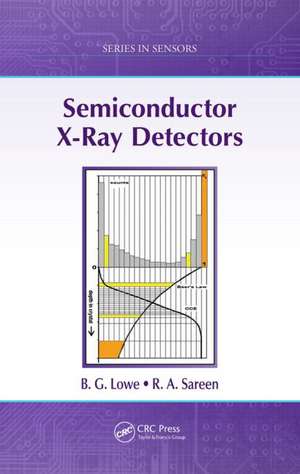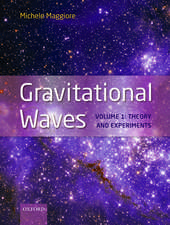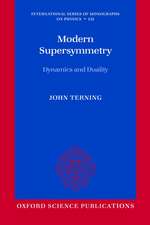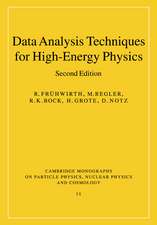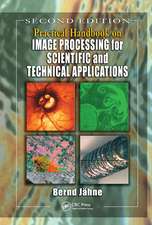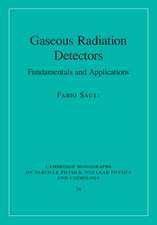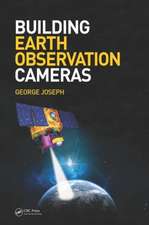Semiconductor X-Ray Detectors: Series in Sensors
Autor B. G. Lowe, R. A. Sareenen Limba Engleză Hardback – 7 dec 2013
| Toate formatele și edițiile | Preț | Express |
|---|---|---|
| Paperback (1) | 387.56 lei 6-8 săpt. | |
| CRC Press – 20 noi 2017 | 387.56 lei 6-8 săpt. | |
| Hardback (1) | 1052.77 lei 6-8 săpt. | |
| CRC Press – 7 dec 2013 | 1052.77 lei 6-8 săpt. |
Din seria Series in Sensors
- 29%
 Preț: 1356.10 lei
Preț: 1356.10 lei - 15%
 Preț: 489.26 lei
Preț: 489.26 lei - 15%
 Preț: 459.74 lei
Preț: 459.74 lei - 15%
 Preț: 498.29 lei
Preț: 498.29 lei - 23%
 Preț: 373.21 lei
Preț: 373.21 lei -
 Preț: 441.20 lei
Preț: 441.20 lei - 15%
 Preț: 514.47 lei
Preț: 514.47 lei - 5%
 Preț: 685.67 lei
Preț: 685.67 lei - 28%
 Preț: 989.36 lei
Preț: 989.36 lei - 25%
 Preț: 387.56 lei
Preț: 387.56 lei - 15%
 Preț: 613.49 lei
Preț: 613.49 lei - 24%
 Preț: 417.30 lei
Preț: 417.30 lei - 27%
 Preț: 1217.73 lei
Preț: 1217.73 lei -
 Preț: 435.17 lei
Preț: 435.17 lei -
 Preț: 500.30 lei
Preț: 500.30 lei - 23%
 Preț: 379.55 lei
Preț: 379.55 lei - 15%
 Preț: 489.26 lei
Preț: 489.26 lei - 15%
 Preț: 489.26 lei
Preț: 489.26 lei - 10%
 Preț: 325.53 lei
Preț: 325.53 lei - 13%
 Preț: 309.58 lei
Preț: 309.58 lei - 18%
 Preț: 745.53 lei
Preț: 745.53 lei -
 Preț: 186.14 lei
Preț: 186.14 lei - 15%
 Preț: 568.28 lei
Preț: 568.28 lei - 20%
 Preț: 588.69 lei
Preț: 588.69 lei - 18%
 Preț: 779.21 lei
Preț: 779.21 lei - 18%
 Preț: 1792.25 lei
Preț: 1792.25 lei - 9%
 Preț: 904.48 lei
Preț: 904.48 lei - 9%
 Preț: 335.16 lei
Preț: 335.16 lei - 29%
 Preț: 1106.78 lei
Preț: 1106.78 lei
Preț: 1052.77 lei
Preț vechi: 1447.92 lei
-27% Nou
201.47€ • 218.77$ • 169.24£
Carte tipărită la comandă
Livrare economică 22 aprilie-06 mai
Specificații
ISBN-10: 1466554002
Pagini: 624
Ilustrații: 343 black & white illustrations, 16 colour illustrations, 14 black & white tables
Dimensiuni: 156 x 234 x 38 mm
Greutate: 1.02 kg
Ediția:New.
Editura: CRC Press
Colecția CRC Press
Seria Series in Sensors
Public țintă
Postgraduate and ProfessionalCuprins
Notă biografică
Author of over 20 publications and the "conditioner" patent for Si(Li) X-Ray Detectors, B. G. Lowe holds a Ph.D from Liverpool University, UK. He has served as commonwealth education officer for University of Columbo, Sri Lanka; lecturer for University of Science-Malaysia, Penang, and North East Wales Institute of Higher Education, UK; chief physicist for Link Systems Ltd, London, UK; physics director, head of development, and senior scientist for Oxford Instruments, London, UK; and senior scientist for e2V Scientific, High Wycombe, UK. He also worked on the UK government-sponsored IMPACT project and CdZnTe detectors at Leicester University, UK. Author of over 15 publications and two patents, R. A. Sareen holds a Ph.D from Manchester University, UK. He has served as research scientist for Ortec, Oak Ridge, Tennessee, USA; founder of Nuclan Ltd, London, UK; technical, managing, main board, and executive director for Link Systems Ltd, London, UK (now Oxford Instruments) and UEI London, UK; researcher at Manchester University; and shareholder in Link Systems Ltd, Gresham Power Electronics and Gresham Scientific Instruments Ltd, Salisbury, UK, and Camscan, Cambridge, UK. A Royal Microscopical Society and Institute of Physics fellow, he has liaised with several UK government departments, including security services, and participated in nuclear strategy and homeland security committees.
Descriere
Identifying and measuring the elemental x-rays released when materials are examined with particles (electrons, protons, alpha particles, etc.) or photons (x-rays and gamma rays) is still considered to be the primary analytical technique for routine and non-destructive materials analysis. The Lithium Drifted Silicon (Si(Li)) X-Ray Detector, with its good resolution and peak to background, pioneered this type of analysis on electron microscopes, x-ray fluorescence instruments, and radioactive source- and accelerator-based excitation systems. Although rapid progress in Silicon Drift Detectors (SDDs), Charge Coupled Devices (CCDs), and Compound Semiconductor Detectors, including renewed interest in alternative materials such as CdZnTe and diamond, has made the Si(Li) X-Ray Detector nearly obsolete, the device serves as a useful benchmark and still is used in special instances where its large, sensitive depth is essential. Semiconductor X-Ray Detectors focuses on the history and development of Si(Li) X-Ray Detectors, an important supplement to the knowledge now required to achieve full understanding of the workings of SDDs, CCDs, and Compound Semiconductor Detectors.The book provides an up-to-date review of the principles, practical applications, and state of the art of semiconductor x-ray detectors. It describes many of the facets of x-ray detection and measurement using semiconductors, from manufacture to implementation. The initial chapters present a self-contained summary of relevant background physics, materials science, and engineering aspects. Later chapters compare and contrast the assembly and physical properties of systems and materials currently employed, enabling readers to fully understand the materials and scope for applications.
